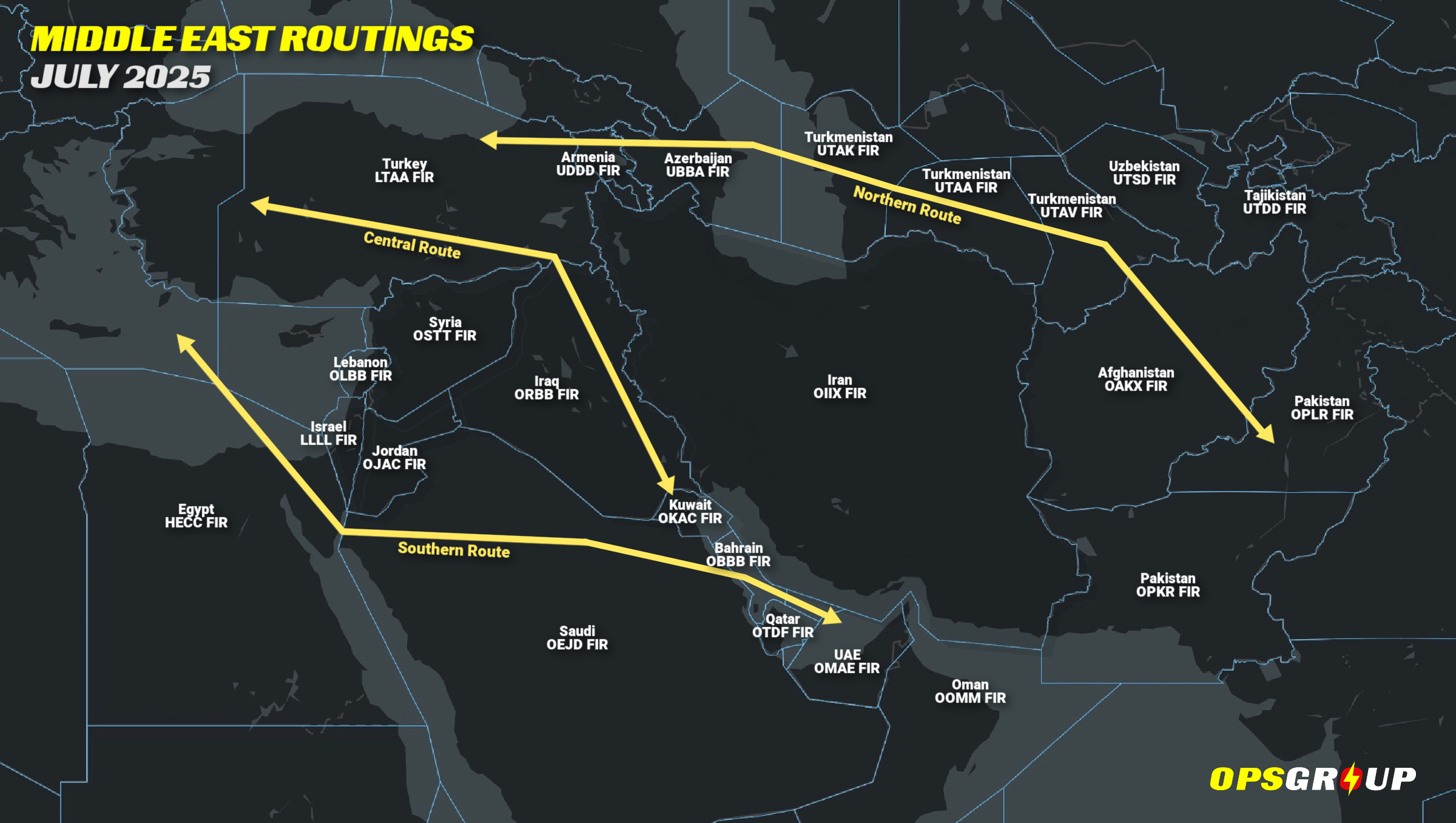Jordan
Risk Level: Three - Caution
[ about risk levels ]
July 2025: The ceasefire between Israel and Iran has held so far. All airspace in the region has largely reopened, but the corridor between Israel and Iran remains high risk if the conflict resumes.
See OPSGROUP Briefing: Middle East airspace situation – June 2025

The primary risk is from short-notice airspace closures due to Iran/Israel airstrikes if the conflict resumes. Jordan also has a high risk of GPS spoofing due to proximity to Israel/Lebanon. RNAV/RNP Approaches may not be available. False GPWS alerts possible.
See OPSGROUP Briefing: Middle East airspace situation – June 2025

The primary risk is from short-notice airspace closures due to Iran/Israel airstrikes if the conflict resumes. Jordan also has a high risk of GPS spoofing due to proximity to Israel/Lebanon. RNAV/RNP Approaches may not be available. False GPWS alerts possible.
